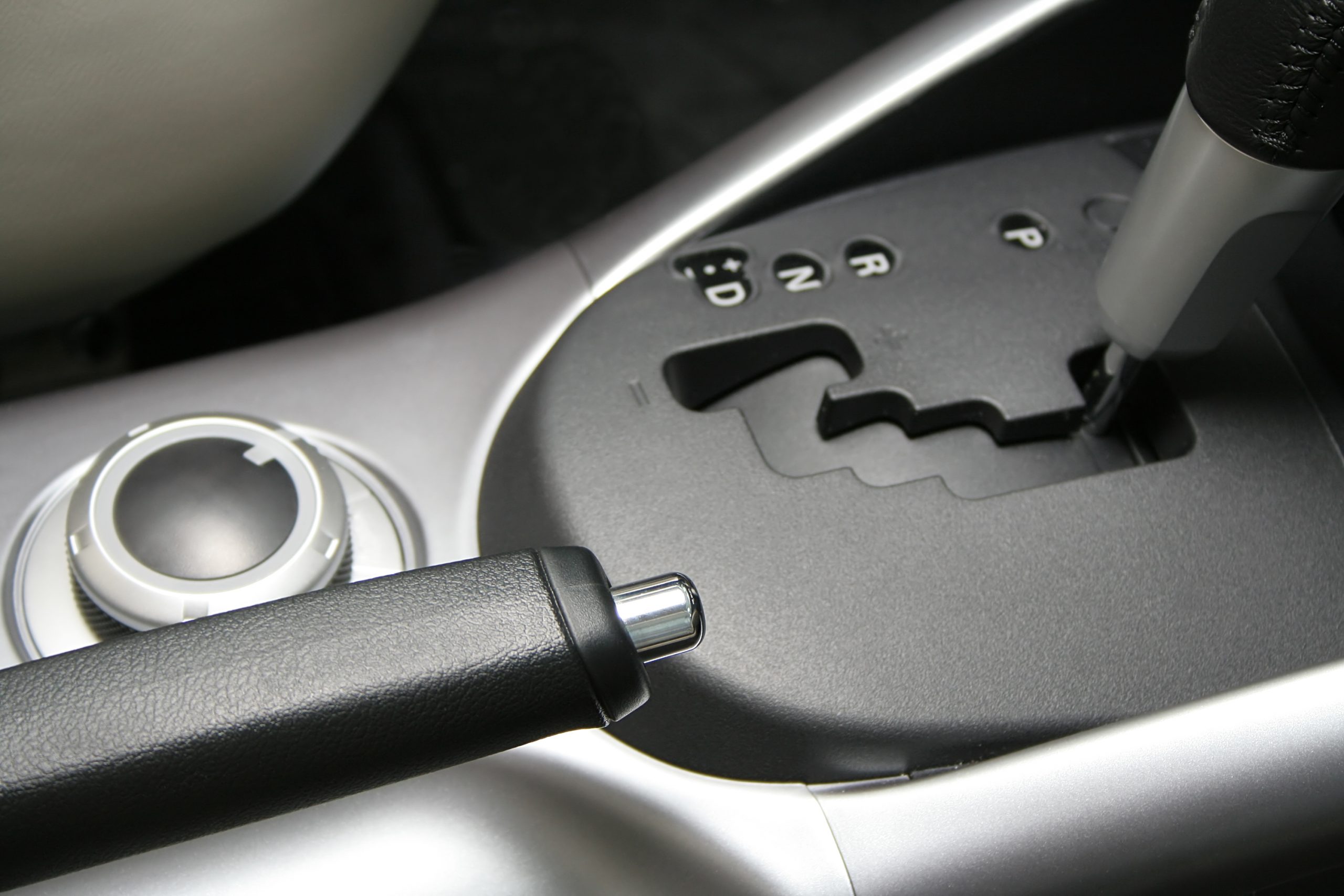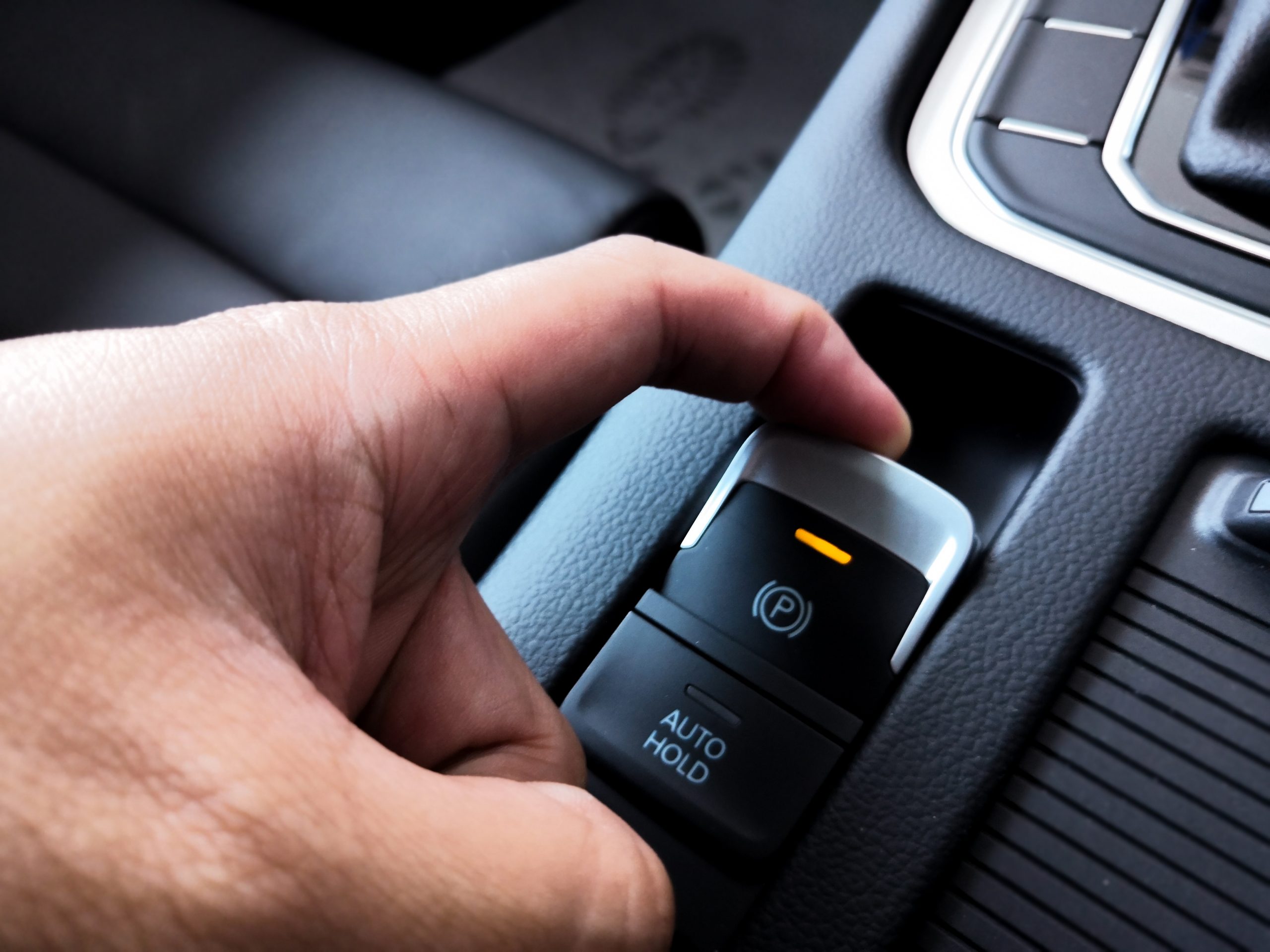Three types of parking brakes

Three types of parking brakes (hand brake, ebrake, pedal brake)
The end of any journey by car, truck, or van can be exciting or exhausting, but parking the vehicle is the inevitable conclusion to the drive. At that point, parking brakes become important. Although parking brakes are more vital in some situations than in others, knowing how to use the different types of parking brakes is an important skill for any driver. With various types of parking brakes in different vehicles, drivers should know where to look for this very useful feature, no matter what kind of vehicle they are operating.
The Merriam-Webster online dictionary defines a parking brake as an emergency brake, which in turn it defines as a brake that can be used when the main brakes fail or to prevent the vehicle from rolling away when it is parked. The issue of rolling away is far more pertinent for very hilly areas of the country than flat ones, but parking brakes can be useful even in areas where the possibilities of that are very slim. Even a slight incline could cause a vehicle to roll into another car or truck, possibly damaging both and potentially causing injuries.
Parking Brakes in Manual or Automatic Vehicles
In manual transmission vehicles, parking brakes are essential for keeping the vehicle stationary. As Matthew Jancer notes in his October 2017 Popular Mechanics article, while automatic transmission vehicles have a gear called “Park,” manual transmission vehicles do not. Even with the engine off, a manual transmission vehicle can easily start moving wherever the ground is not entirely flat. However, the parking brake can keep the vehicle from rolling away and possibly crashing into another vehicle or a person. Putting the gearshift into either Reverse or the first gear on a hill, depending on the direction of the slope, is also a good idea.

Automatic transmission vehicles are far less likely to roll away on their own than manual transmission vehicles are. Putting the vehicle in Park is normally enough to hold them, except possibly on steep hills. Still, as the StackExchange website notes, using the parking brake regularly will help keep the system from freezing up if a driver needs to use it in an emergency. Getting into the habit of using the parking brake on a regular basis will help drivers remember to engage this safety feature when it is necessary for keeping a vehicle in place.
As the AutoBlog website notes, modern vehicles are too large for the parking brake to be very useful in emergency situations on the road, such as preventing a crash while careening down a mountain, but they can be effective on stationary vehicles. These systems work by locking the wheels in place and reducing stress on the transmission. They provide extra security for vehicles parked on hills, or just fir any driver who wishes to ensure that the vehicle will not roll away, even a short distance.
Types of Parking Brakes
In many vehicles, the parking brake is a lever set in the centre console, just to the right of the driver. Sometimes, it can be elsewhere, such as a lever on the steering column where it is easily accessible in case of emergency.
Engaging this type of parking brake is quite simple, but it requires a certain amount of arm strength. The driver pulls the lever up as far as it will go to set the brake. To start moving again, the driver presses a button at the end of a lever to release the brake and then lowers it back onto the floor. It is important to ensure that the lever is completely lowered, as a partially engaged parking brake can damage the system.

Another style of parking brake is a pedal located to the left of the brake in automatic transmission or to the left of the clutch pedal in manual transmission vehicles. The driver engages this brake by pressing down on it as far as it will go. To disengage the brake, the driver may need to press twice on the pedal before slowly releasing it.
A third type of parking brake is electric, activated by a button on the dashboard or central console. This type is the easiest to engage or disengage, but it can be easy to forget to release it before driving away. As the Bluestar website notes, forgetting to release the parking brake can potentially be dangerous as it can damage the system and make it useless for situations where it is needed.
Proper use of the Parking Brake
One way to remember to release the parking brake is to engage it as fully as possible, which will make the vehicle slow and hard to drive until the brake is released. This may be difficult to do in winter, when cold temperatures can cause parking brake cables to freeze and fail to disengage. If it is impossible to leave the vehicle in a sheltered place in winter, it is a good idea to let the vehicle warm up before attempting to disengage the parking brake.
Although a parking brake is not normally strong enough to stop a vehicle going at high speeds in the event of a failure in the braking system, it can slow the vehicle down enough for the driver to find a safe solution. Still, it is important to use the brake properly, pulling up slowly and steadily to avoid causing the vehicle to skid or to swerve around the road. Losing control in this way could be just as dangerous as having no brakes, as drivers can panic and steer into another lane or crash into a barrier. However, using the brake slowly and cautiously can help the driver keep the vehicle moving forward steadily.
Using the parking brake regularly is a good habit for all drivers, whether they are operating manual or automatic transmission vehicles. This can help prevent corrosion in the braking system while also giving drivers a better sense of how the brake works. In an emergency, the driver will also know exactly where the brake is and how to engage it, rather than having to think about it. Whenever you drive, be sure to remember your parking brake.
